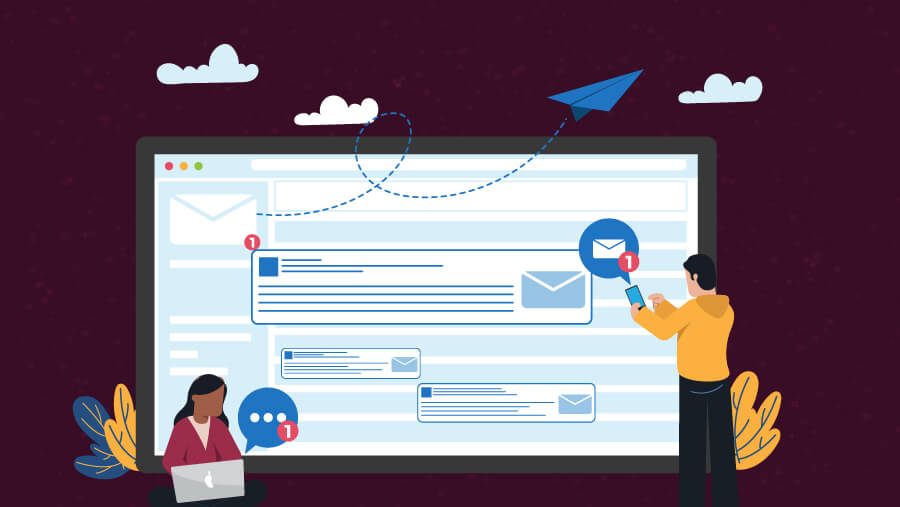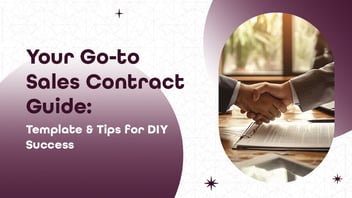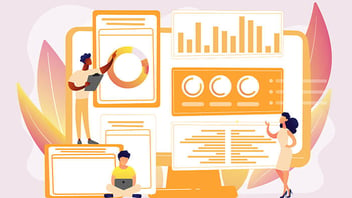
Get More Replies: Secrets of Cold Email Personalization!
Statistics show that personalized emails enjoy a 29% higher open rate. Personalization can pop up your email in their inboxes when reaching out to your prospects. Hence, they boost engagement and build stronger connections with prospects, increasing conversion rates.
Conversely, sending generic emails risks being ignored or marked as spam, ultimately undermining your outreach efforts.
So, we have this guide to delve into the importance of personalization in your cold email outreach. Let’s explore!
Prospecting through Cold Emailing Challenges and How Personalization Helps
Check out this graph:
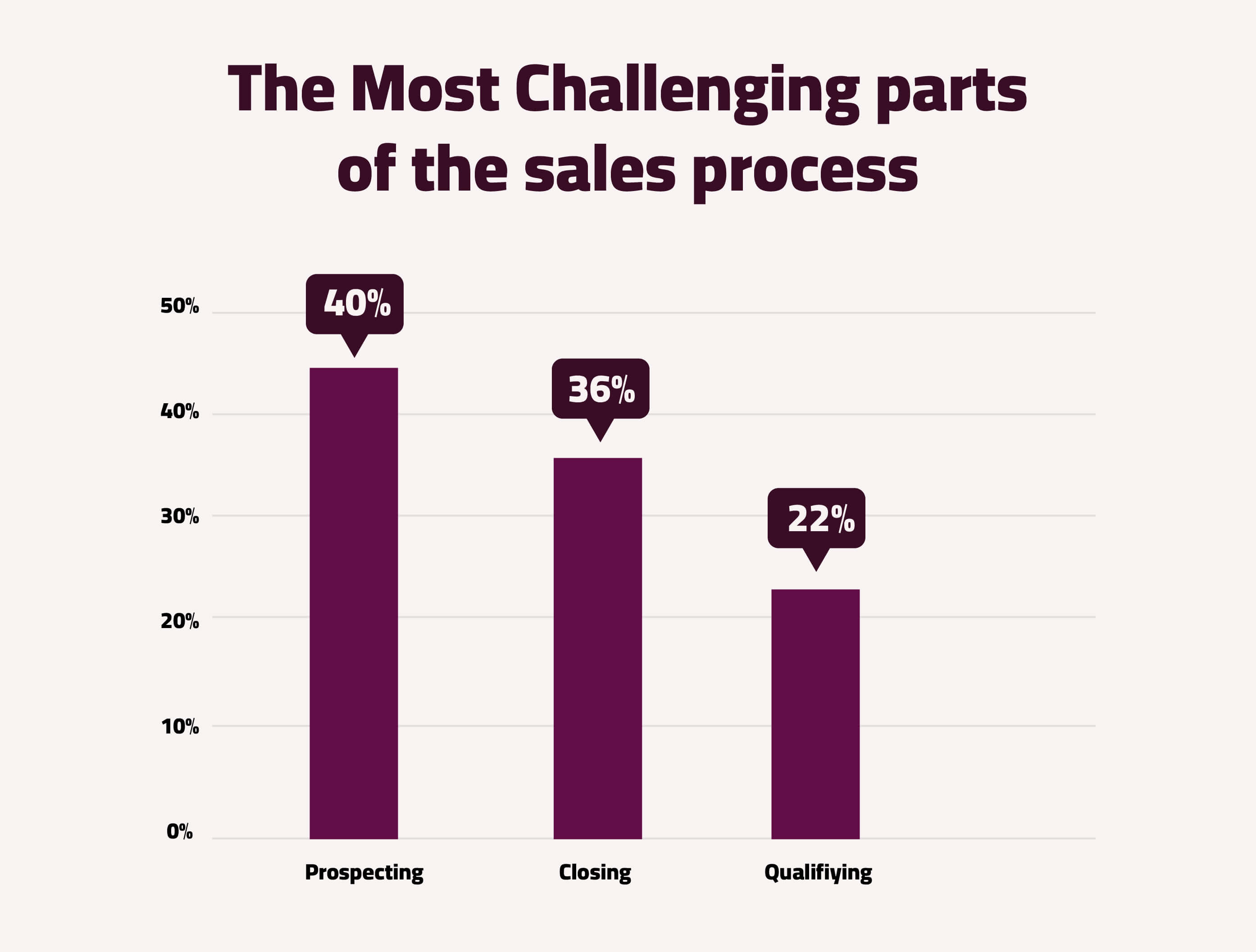
While performing prospecting via cold emailing, you may experience the following obstacles as per 40% of Sales Professionals:
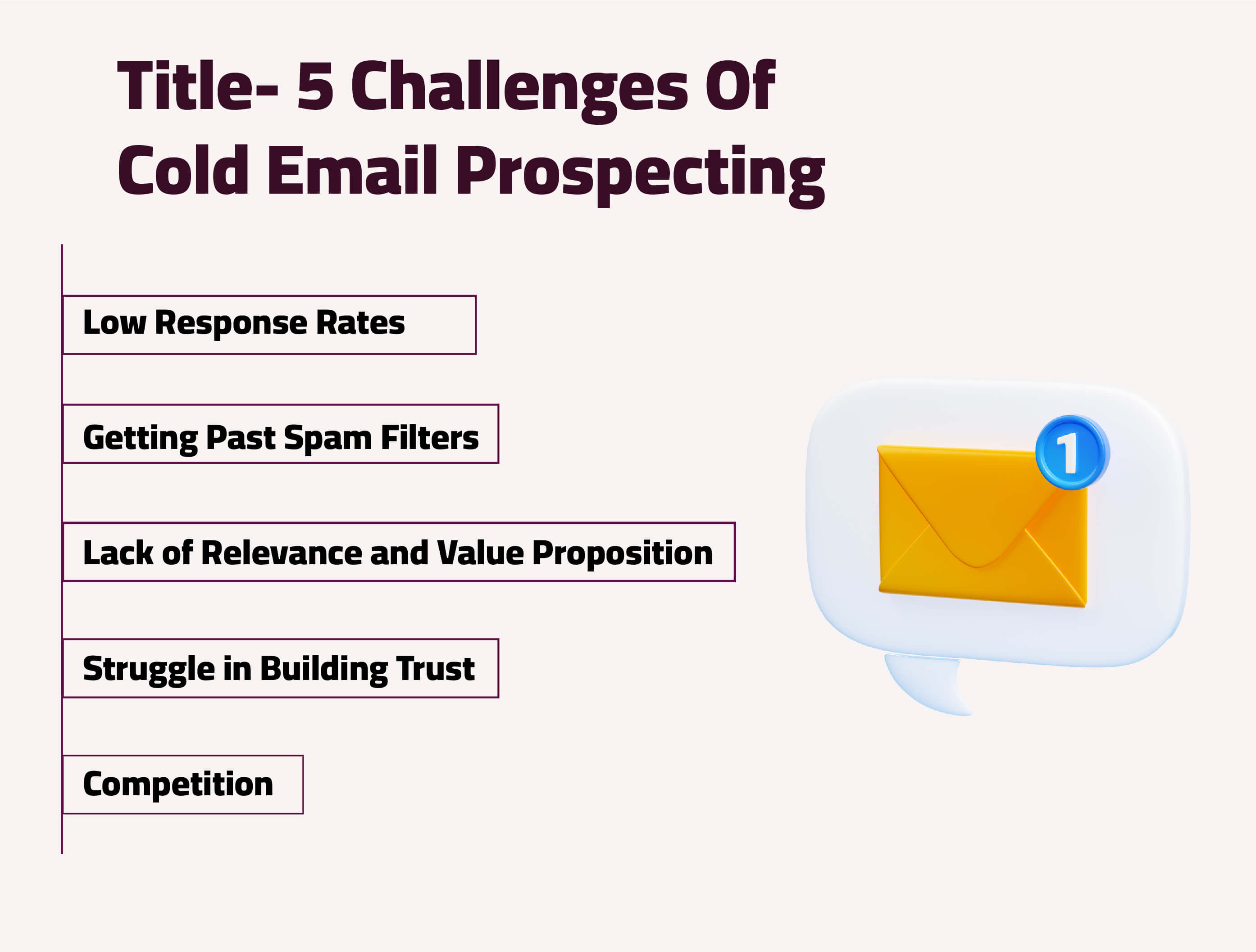
- Low Response Rates: Many recipients may ignore or delete cold emails without opening them.
- Getting Past Spam Filters: Email filters can divert cold emails to spam folders, making it difficult for them to reach the intended recipients' inboxes.
- Lack of Relevance and Value Proposition: If the email does not offer something of value to the recipient or address their specific pain points, they are unlikely to engage with it.
- Struggle in Building Trust: Establishing trust with a prospect without a prior relationship with the sender can be challenging. Cold emails need to be crafted to build credibility and trust.
- Competition: Prospects' inboxes are likely inundated with emails from other sales professionals, making it harder to stand out and grab their attention.
Personalization helps tailor emails to address the recipient's needs, interests, and pain points. Thus, it increases your likelihood of gaining more engagement from your prospects and boosts trust.
It also reduces the chances of emails being marked as spam, as they appear more genuine and relevant to the recipient. It improves inbox deliverability and helps you stand out amidst a crowded inbox.
Next, let’s check out proven strategies that sales reps use to make their cold emails effective.
5 Cold Email Personalization Strategies Top-performing SDRs Use
Before we explore the tactics, check out the effects of personalized elements in the email’s open rates:
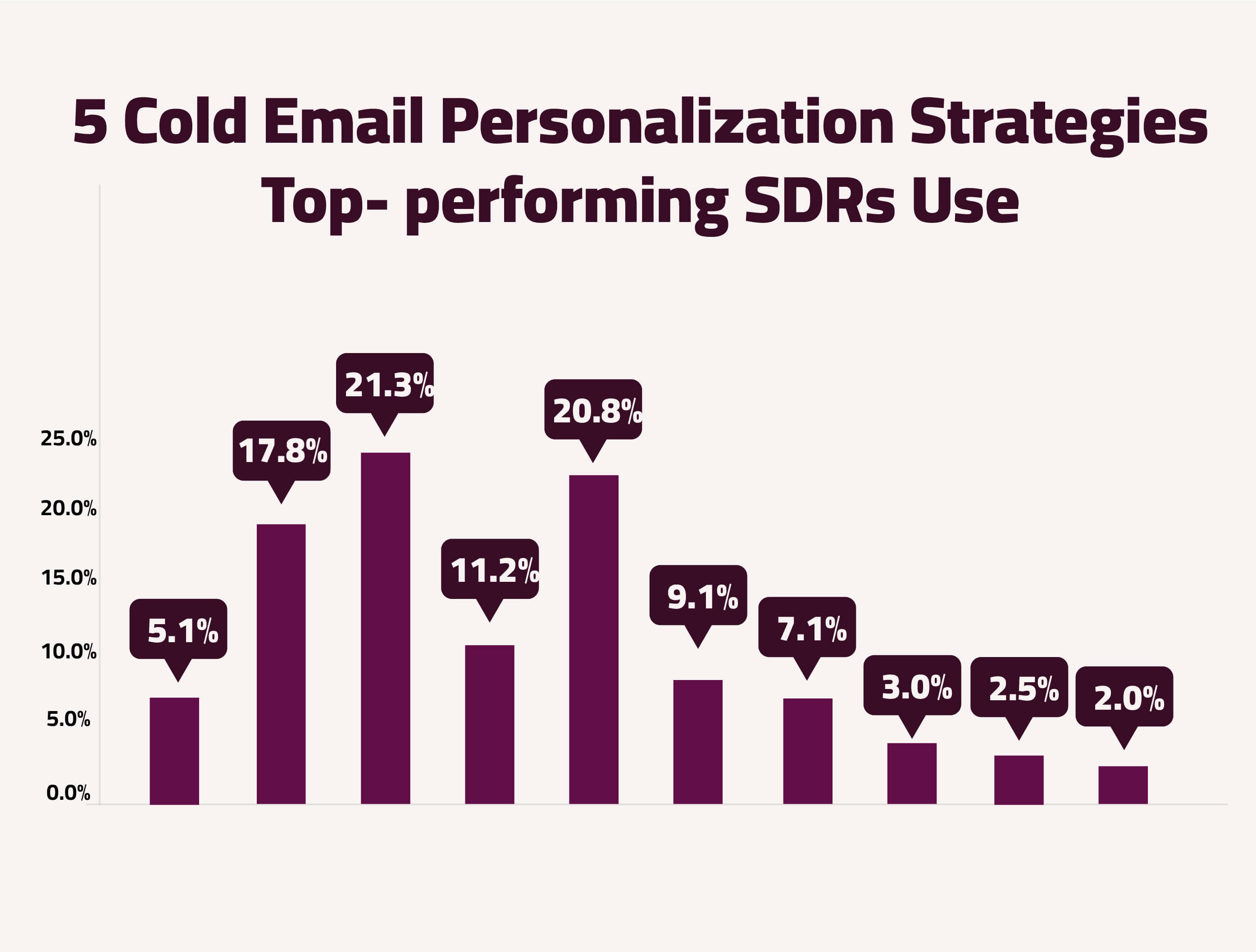
Here are the five powerhouse cold email personalization strategies qualified sales development representatives (SDRs) suggested. You can consistently drive results and become top performers among the competition using these tactics:
1. Research Your Prospects Thoroughly
The very first suggestion of successful SDRs is you must define your Ideal Customer Profile (ICP).buyer persona via:
- Market research
- Surveys, interviews, and buying pattern analysis of existing customers.
Then, segment your target audience based on demographic, psychographic, and behavioral data. Adding to this, emphasize enriching your research with these elements:
- LinkedIn: Leverage advanced search filters on LinkedIn to find prospects matching your ICP. Review profiles for insights into professional background, skills, and interests.
- Company Websites: Visit target businesses' websites to understand their products, mission, culture, news, and events.
- Social Media Platforms: Beyond LinkedIn, explore platforms like Twitter, Facebook, and Instagram for insights into prospects' interests, hobbies, and achievements.
- Industry Publications and News: Stay updated on industry trends by subscribing to relevant newsletters, blogs, or publications.
- Sales Intelligence Tools: Leverage tools like ZoomInfo or Clearbit for additional prospect data such as company size, revenue, and key decision-makers.
- Common Connections: Look for mutual connections or shared interests that can be referenced in your cold email.
- Trigger Events: Monitor job changes or funding announcements within the prospect's company.
2. Put Greater Emphasis on the First Email Personalization in the Sequence
You must pour more of your personal touch into the first cold email in the sequence. Why? Firstly, it's crucial because the initial email grabs the most attention.
Most performing sales professionals emphasize the importance of making a strong first impression to pique the prospect's interest. While subsequent emails in the sequence may require minimal personalization, the first email sets the tone for the conversation.
Even when you use pre-built cold email templates, ensure personalization in the first email.
For instance, if you discover a prospect's recent industrial event visit, incorporating this information into the email can make it more relevant and engaging. This personalized touch shows that you've taken the time to research and understand the prospect's interests. It increases your likelihood of capturing their attention and initiating a meaningful dialogue.
Remember these points while personalizing your cold email:
- To establish credibility, personalize the cold email body with specific details from prospect research, such as recent achievements or mutual connections.
- Use a call to action (CTA) that motivates action respectfully, avoiding aggressive language.
- Adhere to ethical guidelines, respect data protection laws, and provide clear opt-out options. Transparency builds trust.
3. Focus the Cold Email on the Role You’re Reaching Out to
If you're practicing multithreading, top SDRs suggest customizing your message based on each recipient's role.
For example, if you're contacting marketing professionals, your email should address marketing-related problems or challenges they may face.
On the other hand, if your target is CEOs or top-level executives, focus on broader issues such as brand visibility, revenue growth, or strategic initiatives. CEOs are often concerned with overarching business objectives.
This is how you can tailor your message to show how your offering aligns with the target company's goals and can drive tangible results at a higher level.
4. Set a Follow-Up Strategy
Your chance to get a response from prospects boosts by 25% if you send over one email.
Thus, you need an effective strategy to follow up once you send a cold email to your target prospect. And, as per high-profile SDRs, you must add these key components to your strategy:
- Timing: Follow up within a reasonable timeframe after the initial email, typically within 3 to 5 business days. Avoid being too aggressive or too passive; find a balance that respects the recipient's time while keeping the conversation fresh in their mind.
- Needed Personalization: Tailor your follow-up email to reference any previous interactions or insights gained from the initial email. Acknowledge any responses or actions the recipient takes, and then continue the conversation based on their interests or needs.
- Value Proposition Reinforcement: Reiterate your product or service's value proposition and how it addresses the recipient's specific pain points or challenges. Highlight any additional benefits or features that may have been overlooked in the initial email.
- Clear Next Steps: Include a clear and actionable CTA encouraging the recipient to take the next step. It could be scheduling a call, arranging a demo, or providing further information. Make it easy for them to respond and engage with you.
- Cold Email Automation Tool Usage: These tools offer robust features for automated follow-up sequences, scheduling options, trigger-based workflows, etc.
- Multi-Channel Approach: Consider incorporating other outreach channels such as phone calls, LinkedIn messages, or SMS to supplement your email follow-ups. Different people prefer different communication methods. So, diversifying your approach increases the chances of connecting with the recipient.
- Experimentation and Optimization: Continuously evaluate the effectiveness of your follow-up strategy by monitoring response rates and engagement metrics. Experiment with different timing, messaging, and channels to identify what works best for your target audience and refine your approach accordingly.
5. Closely Analyze the Performance
It’s difficult to gauge what’s working in your cold email efforts without adequate measurements and what you need to improve. Thus, you must evaluate your campaign performance carefully; here’s how:
- Keep track of important metrics such as your cold emails' open, response, and conversion rates.
A high open rate indicates that your subject lines are compelling, while a high response rate suggests your message resonates with recipients. Conversion rates indicate the success of your emails in driving desired actions, such as scheduling a call or making a purchase.
- Conduct A/B testing to compare different elements of your cold emails and identify what resonates best with your audience. Test variables include subject lines, email body content, call-to-action wording, and sender name.
- Pay attention to patterns or trends in the data through regular reviews within a specific interval (Weekly, quarterly). For example, certain subject lines consistently outperform others or specific messaging that generates more responses. Use this information to iterate your strategy and make informed adjustments to improve results.
Conclusion
Personalization boosts open rates and strengthens connections with prospects in cold email outreach. Using personalized strategies improves your chances of getting replies and conversions.
Partnering with Revnew can take your personalization efforts to the next level, leveraging their expertise for remarkable results. Connect with us today to get exclusive strategies to boost engagement and conversion rates with effective personalization tactics.
